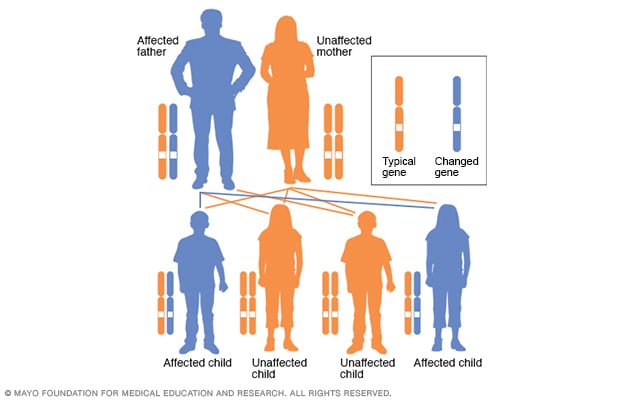Overview
Anatomy of the eye

Anatomy of the eye
Your eye is a complex and compact structure measuring about 1 inch (2.5 centimeters) in diameter. It receives millions of pieces of information about the outside world, which are quickly processed by your brain.
Retinoblastoma is an eye cancer that begins in the retina — the sensitive lining on the inside of your eye. Retinoblastoma most commonly affects young children, but can rarely occur in adults.
Your retina is made up of nerve tissue that senses light as it comes through the front of your eye. The retina sends signals through your optic nerve to your brain, where these signals are interpreted as images.
A rare form of eye cancer, retinoblastoma is the most common form of cancer affecting the eye in children. Retinoblastoma may occur in one or both eyes.
Products & Services
Symptoms
Because retinoblastoma mostly affects infants and small children, symptoms aren't common. Signs you may notice include:
- A white color in the center circle of the eye (pupil) when light is shone in the eye, such as when someone takes a flash photograph of the child
- Eyes that appear to be looking in different directions
- Poor vision
- Eye redness
- Eye swelling
When to see a doctor
Make an appointment with your child's doctor if you notice any changes to your child's eyes that concern you. Retinoblastoma is a rare cancer, so your child's doctor may explore other more common eye conditions first.
If you have a family history of retinoblastoma, discuss it with your doctor if you're planning to have children.
Causes
Autosomal dominant inheritance pattern

Autosomal dominant inheritance pattern
In an autosomal dominant disorder, the changed gene is a dominant gene. It's located on one of the nonsex chromosomes, called autosomes. You need only one changed gene to be affected by this type of disorder. A person with an autosomal dominant disorder — in this example, the father — has a 50% chance of having an affected child with one changed gene. The person has a 50% chance of having an unaffected child.
Retinoblastoma occurs when nerve cells in the retina develop genetic mutations. These mutations cause the cells to continue growing and multiplying when healthy cells would die. This accumulating mass of cells forms a tumor.
Retinoblastoma cells can invade further into the eye and nearby structures. Retinoblastoma can also spread (metastasize) to other areas of the body, including the brain and spine.
For most instances of retinoblastoma, it's not clear what causes the genetic mutation that leads to cancer. However, it's possible for children to inherit a genetic mutation from their parents.
Retinoblastoma that is inherited
Gene mutations that increase the risk of retinoblastoma and other cancers can be passed from parents to children.
Hereditary retinoblastoma is passed from parents to children in an autosomal dominant pattern, which means only one parent needs a single copy of the mutated gene to pass the increased risk of retinoblastoma on to the children. If one parent carries a mutated gene, each child has a 50% chance of inheriting that gene.
Although a genetic mutation increases a child's risk of retinoblastoma, it doesn't mean that cancer is inevitable.
Children with the inherited form of retinoblastoma tend to develop the disease at an earlier age. Hereditary retinoblastoma also tends to occur in both eyes, as opposed to just one eye.
Complications
Children treated for retinoblastoma have a risk of cancer returning in and around the treated eye. For this reason, your child's doctor will schedule follow-up exams to check for recurrent retinoblastoma. The doctor may design a personalized follow-up appointment schedule for your child that includes frequent eye exams.
Additionally, children with the inherited form of retinoblastoma have an increased risk of developing other types of cancers in any part of the body in the years after treatment, especially pineoblastoma, a type of brain tumor. For this reason, children with inherited retinoblastoma may have regular exams to screen for other cancers.
Prevention
Doctors aren't sure what causes most instances of retinoblastoma, so there's no proven way to prevent the disease.
Prevention for families with inherited retinoblastoma
If your child is diagnosed with retinoblastoma, your doctor may recommend genetic testing to determine whether the cancer was caused by an inherited gene mutation. Your doctor may recommend that you meet with a genetic counselor who can help you decide whether to undergo genetic testing.
Genetic testing enables families to know whether their children may have an increased risk of retinoblastoma, so medical care can be planned accordingly. For instance, eye exams may begin soon after birth or, in some situations, before a baby is born. That way, retinoblastoma may be diagnosed very early — when the tumor is small and a chance for a cure and preservation of vision is still possible.
Genetic testing can be used to determine whether:
- Your child with retinoblastoma is at risk of other related cancers.
- Your child with retinoblastoma may carry a gene mutation that can be passed to his or her future children.
- Your other children are at risk of retinoblastoma and other related cancers.
- You and your partner have the possibility of passing the genetic mutation on to future children.
Nov. 04, 2022